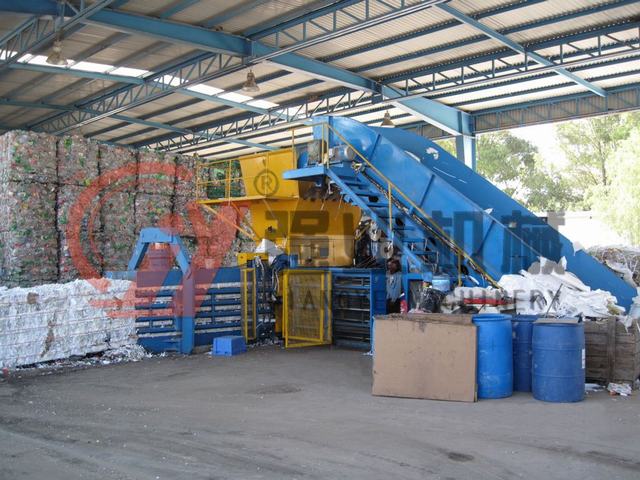 |
| Electric Arc Furnace, image courtesy of Made in China |
Steel is integral to industrial societies
Steel is used in so many applications, from consumer uses like cars, through to heavy duty industrial application such as reinforcing for concrete. Indeed, it is so pervasive that it could be said to define the current era. All of this means that there are a great many buyers each looking to use it in any number of applications. The market drives this.Translating to other materials, it is vital to let markets drive recycling, a point I return to over and over. Recycling without a market is just another form of waste disposal. Markets thrive where there is competition, and so developing a myriad of uses for the materials within waste will encourage its recycling.
Steel from scrap is high quality and uses less energy to make than from iron ore
It always helps if product generated from recycled material is of high quality. It especially helps if there are energy savings (though these tend to net out through pricing of scrap steel when compared with other raw materials such as iron ore).
Sometimes these attributes are inherent in the product. Steel, aluminium and glass all recycle into high quality products using less energy. Sometimes it is a decision made by the recycler. In deciding how to sort for materials, the quality of the end product is determined. Failing to remove steel (ie nails) from timber recycling plants means that the chip cannot be used for particle board manufacture.
Steel is a cornerstone of the American economy
The point here is similar but different to my first. Being linked into the dynamic, innovative American economy means that there will always be a seething mass of engineers and entrepreneurs looking to do better. This is one of the great features of the American culture, and why America recycles more than 80% of its steel, far better than any other economy.
Other materials have a great prospect if they too can hitch their wagon to a culture of innovation. You can imagine, for instance, palladium's use in electronics driving all sorts of recovery innovation. This will be the subject of a future blog.
Steel is easily extracted
Being magnetic, it is easy to remove steel. Similar processes can and are being invented for other products, but here is where materials processing engineers with some lateral thinking could be game changers. We need to support this, encourage it, drive it.
Steel is dense and easily transported
There is a lot of cost in moving space around. If you can get a lot of weight into that space, then you are increasing the transport efficiency. Less dense materials can be made more dense through compactors, and this must be (and is) a first step for any recycling operations.
 |
| Waste paper baler, photo courtesy of Alibaba |
Steel is high value
Leaving perhaps the most important to last - steel has a value that is high and preserved as it moves through the economy. This enables a vast web of collectors consolidating to larger and larger entities, all profitable in their own right. The ecosystem thus created is vital. Container deposit schemes seek to create the same system of cascading value through legislation. Not as good as a natural market, but sometimes these sorts of steps are needed. Any long term recycling and upcycling venture must be financially worthwhile for all participants.
So my thoughts. I'd be keen for comments on how the success of scrap steel can be, and is being, translated to other materials.

The attractive thing about metal recycling is that it offers a rebate through the gate at the metal recycling facilities. If there is reward for recycling then the community will naturally support the concept and it forms a source of income for many people in the community.
ReplyDeleteLet's look at electronic waste. Currently manual disassembly of material such as computers, TV sets, phones, etc. can achieve up to 98% recovery of various materials including glass, precious metals, plastics etc. The problem however is that theses materials need to be separated before they can be sent to market. The separation process is expensive given labour costs in Australia. The process can be profitable with the introduction of automation. Investment in automation will not happen unless volume is guaranteed.
Sadly, because of the cost of recycling of e-waste it is easier for councils to landfill. In my years of marketing to councils I have been continually frustrated with the lack of true support for the diversion of e-waste from landfill and the decisions which are ALWAYS based on price. The National Product Stewardship legislation was passed in Canberra in 2011. That scheme, it was thought, would provide assistance to the community in recycling of domestic e-waste and perhaps ease the load for councils and provide better incentives to divert the material from landfill. That scheme is I think it's fair to say becomming farcical and looks doomed to failure. It will certainly not solve the problems faced by local councils.
Your challenge Adam (and mine)my friend is to change the mindsets of the people who have access to recyclable material to such an extent that business can invest with surety in solutions which will result in sustainable businesses and with high-impact environmental outcomes. The markets are there but the materials are not.
Vince,
ReplyDeleteThis is all very true, and you're absolutely correct that scrap steel works because everyone down the line makes money. When that happens, it's easy. Part of the thinking needs to be how you manage to replicate that situation where it doesn't currently exist. Maybe some new thinking around business model?
The e-waste discussion is one I want to research and blog on in some detail, because it is a classic story of a mismatch between resource value (there are large quantities of gold etc going into landfill) and effort/investment required to recover leading to it not happening well at all. Plus the inevitable interference of government making things harder rather than easier.
I will be in touch as I research.
Thanks Adam. Just one more comment..
ReplyDeleteIn Europe and other places where large volumes of e-waste are available the model of paying for e-waste works and makes bucks!!!! Working for a multi-national, its clear to see the model works but it all comes down to the availability of material and proximity of markets/automated technology. What works in high density populated developed countries doesn't necessarily work in a country like Australia. That is what I have been grappling with for years and I am going bald scratching my head LOL.
I would love to continue to follow this blog and wish you well.
Thanks Vince.
ReplyDeleteThis is often the problem - securing enough product to warrant the investment. Perhaps there is a pathway that can see the investment gradually scaled up, but one that might be overlooked by large outfits. I don't know, but look forward to investigating it further.